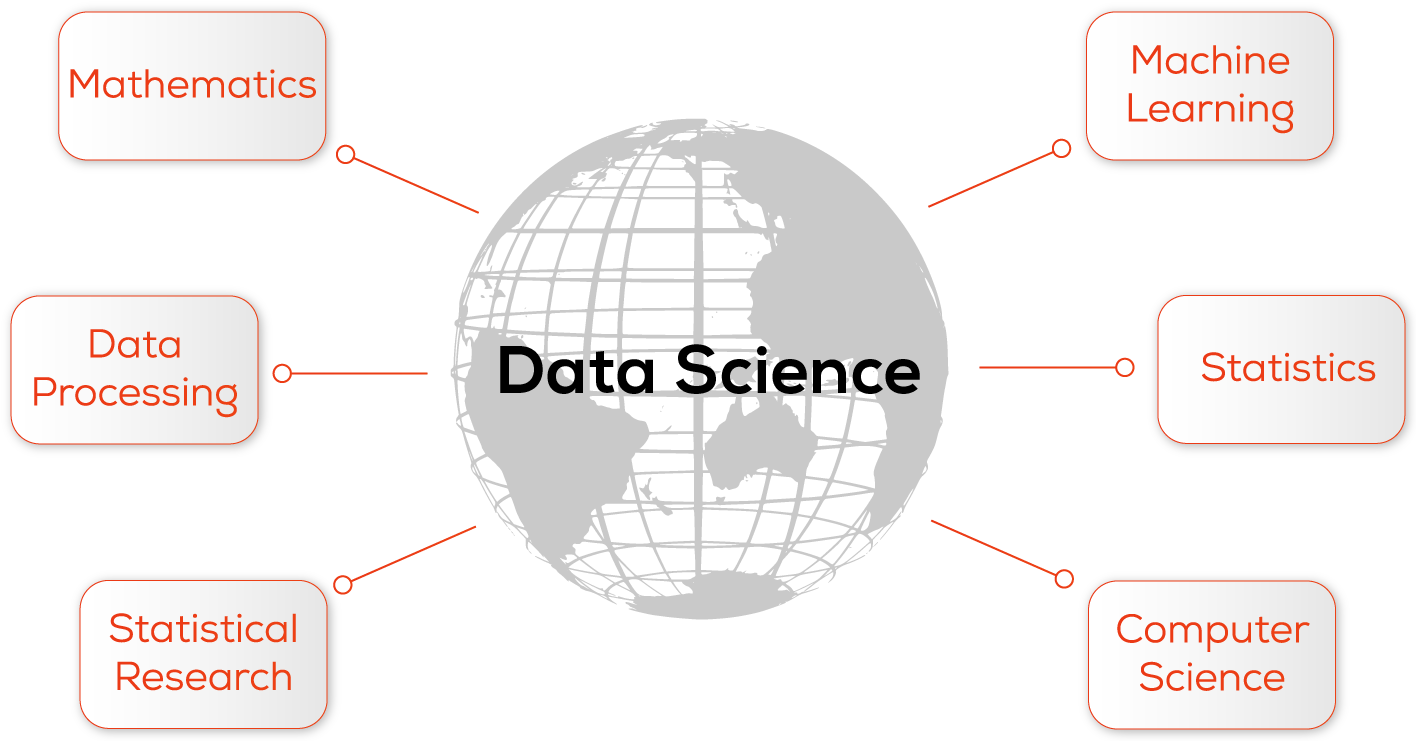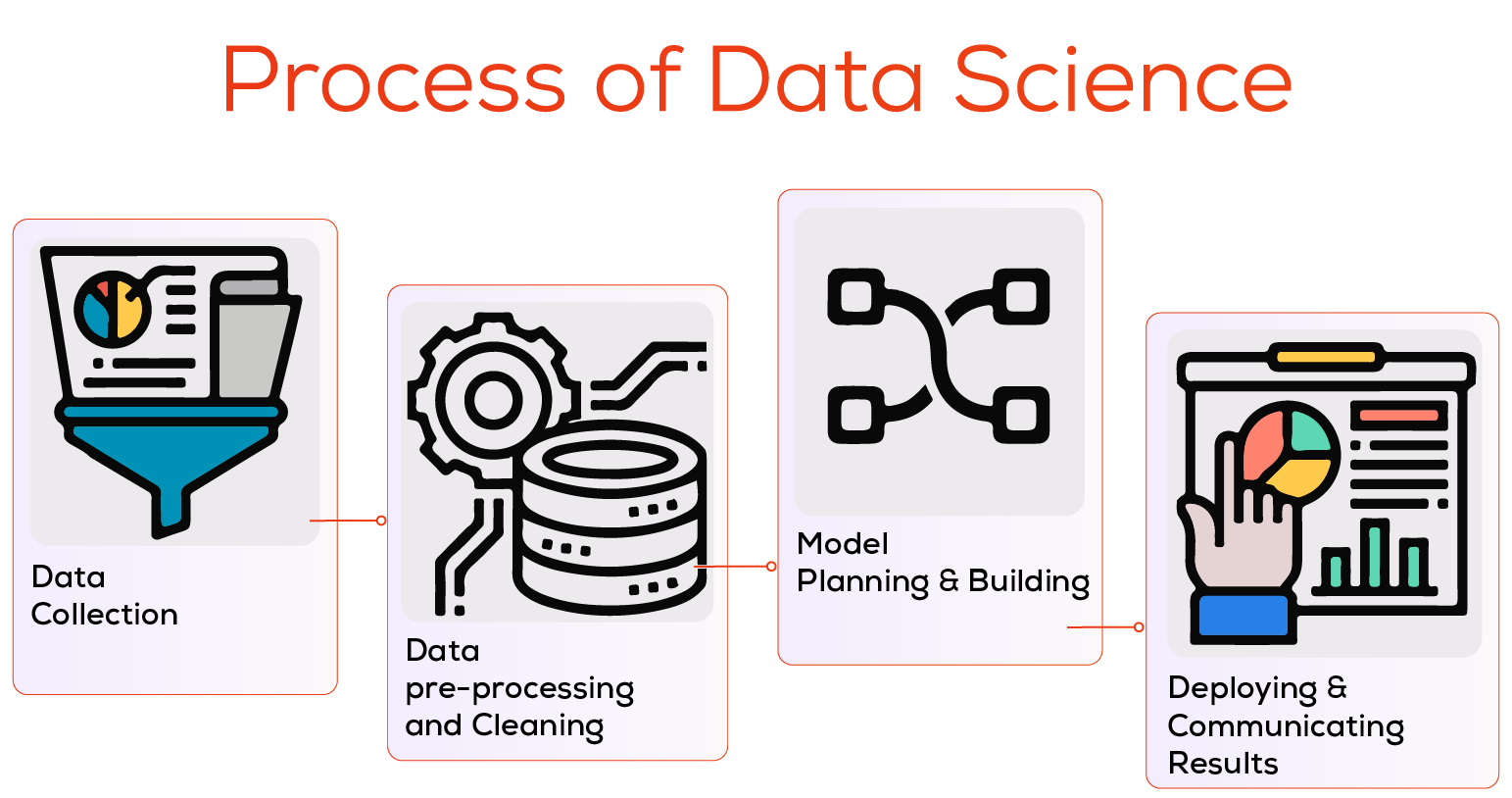1- What is Data Science?
Data science combines math and statistics with specialized programming, advanced analytics, artificial intelligence (AI), machine learning, and specialist subject matter expertise to unearth useful information that is hidden in an organization’s data. Decision-making and strategic planning can be guided by these findings.
Data science is one of the fields with the greatest rate of growth across all industries due to the increasing volume of data sources and resulting data. Therefore, it is not surprising that the position of the data scientist was named the “sexiest job of the 21st century” by Harvard Business Review. Professionals are relied upon more and more by organizations to analyze data and offer useful advice for enhancing business outcomes.

2- Why is Data Science being Important?
Data science, AI, and machine learning are becoming increasingly important to businesses. Regardless of size or industry, organizations must effectively build and deploy data science capabilities if they want to remain competitive in the era of big data. Otherwise, they run the danger of falling behind.
3- How does Data Science Works?
Analysts can derive great information because the data science lifecycle encompasses a variety of roles, technologies, and processes. The following stages are typically followed by a data science project:
Data Collection: The lifecycle starts with collecting raw, unprocessed data, both structured and unstructured, from all pertinent sources utilizing several techniques. Among these techniques are data entry by humans, web scraping, and real-time streaming from systems and devices. Unstructured data including log files, video, music, photos, the Internet of Things (IoT), social media, and more are just a few examples. Structured data sources include customer data, for example.
Data Pre-Processing and Cleaning: Businesses must consider different storage systems depending on the type of data that has to be captured because data can have a variety of formats and structures. Workflows for analytics, machine learning, and deep learning models are made easier by the standards that data management teams help to establish for data storage and structure. ETL (extract, transform, load) tasks or other data integration tools are used during this level to clean, deduplicate, transform, and combine the data. Before importing the data into a data lake, warehouse, or another repository, this data preparation is crucial for improving data quality.
Model Planning & Building: To investigate biases, tendencies, variations, and distributions of values inside the data, data scientists perform an exploratory analysis of data. Hypotheses are generated for alpha or beta testing because of this data analytics exploration. Additionally, it enables analysts to assess the data’s applicability for usage in modeling attempts for data modeling, machine learning, and/or deep learning. Organizations may depend on these findings for corporate decision-making, which would enable them to scale more effectively, depending on the model’s accuracy.
Deploying and Communicating Results: Finally, to help business analysts and other decision-makers to better understand the findings and how they affect the business, the findings are presented as reports and other data visualizations. Data scientists can create visualizations using tools specifically designed for the purpose, or they can utilize a computer language for data science, such as R or Python.

4- Stake Holders of Data Science Process
Three types of stakeholders supervise or oversee the data science process.
Business Owners/ Executives: To describe the issue and create an analytical plan, these executives collaborate with the data science team. They might oversee a data science team and be the head of a department inside the company, such as marketing, finance, or sales. To assure the completion of projects, they collaborate closely with data science and IT management.
IT Specialists: Senior IT managers oversee the design and infrastructure that will enable data science operations. To ensure that data science teams function effectively and safely, they continuously monitor operations and resource utilization. They could also oversee the development and maintaining IT infrastructures for data science teams.
Data Science Experts: Managers or expertsthat specialize in data science oversee the daily operations of the data science team. They are effective team builders who can blend project planning and monitoring with team development.
The data scientist, however, is the most significant participant in this process.
5- Who/ What is Data Scientist?
One who specializes in the procedure of gathering, arranging, and evaluating data so that the information contained therein can be told and with practical lessons learned. Data scientists are adept at finding patterns contained within massive amounts of data, and they frequently employ cuttingedge algorithms and machine learning models to assist businesses and organizationsin making precise evaluations and forecasts. The professional data scientist is well-versed in math and statistics and has worked with languages like R, Python, and SQL.
Data scientists must be able to do the following:
• Understand the business well enough to identify business pain areas and ask importantquestions.
• Apply computer science, statistics, and business acumen to data analysis.
• Utilize a wide range of tools and methods for preparing and extracting data, including databases, SQL, data mining, and data integration approaches.
• Predictive analytics and AI, including machine learning models, deep learning, and natural language processing, are used to glean insights from large amounts of data.
• Write algorithms that can perform calculations and data processing automatically.
• Inform decision-makers and stakeholders at all levels of technical understanding by telling and illuminating stories that concisely explain the meaning of results.
• Describe how the findings can be applied to resolve business issues.
• Work along with other data science team members like IT architects, data engineers, and application developers as well as business and data analysts.
Because of the increased need for these data science abilities, many people who are starting their careers in data science research a range of data science programs, including degree programs, certificate programs, and courses offered by academic institutions.
6- Data Science Team
Data Scientist: Data scientists gather, analyze, and visualize data; they occasionally create machine learning models.
Data Analyst: Data analysts oversee gathering, scrubbing, analyzing, and reporting data. They occasionally monitor web analytics.
Business Analyst: Data is used by business analysts to generate practical business findings for the rest of the business.
Data Engineer: Data engineers create, construct, and maintain data pipelines as well as test data in computing environments.
Machine Learning Engineer: Systems for machine learning implementations are created by machine learning engineers.
7- Data Science Uses:
• With the help of data science, inferences and predictions can be drawn from seemingly unstructured or unrelated data.
• Users’ data can be turned into useful or profitable information by IT companies using certain strategies after they collect it.
• Data science has also begun to influence the transportation sector, as seen with driverless vehicles. With the deployment of autonomous cars, it is easy to reduce the number of
fatalities. For instance, with autonomous automobiles, training data such as the speed limit on the highway, congested streets, etc. are provided to the algorithm and the data is reviewed utilizing Data Science methodologies.
• Through genetic and genomic research, data science applications provide a greater sense of medical customization.
8- Data Science Tools
Although the field of data science is tough, there are luckily many tools accessible to support data scientists in their work.
• RapidMiner, MATLAB, Excel, SAS, Jupyter, and R Studio for data analysis
• Informatica/Talend, AWS Redshift for Data Warehousing
• Data visualization using Tableau, Cognos, Jupyter, and RAW
• Machine Learning using Azure ML studio, Mahout, and Spark MLib
9- Applications of Data Science
Almost every business now uses data science.
1- Health Care Industry
Companies in the healthcare industry are embracing data science to create complex medical equipment to diagnose and treat ailments.
2- Video Gaming
Data science is currently being used to assist produce video and computer games, which has advanced the gaming experience.
3- Images Processing
One of the most common data science applications is finding patterns in images and detecting objects in them.
4- Fuzzy/ Recommender Systems
Depending on what you prefer to watch, buy, or explore on their platforms, different video platforms will suggest movies and products to you.
5- Transportation
Companies in the logistics industry utilize the data science to improve routes to assure faster product delivery and boost operational effectiveness.
6- Fraud detection
To identify fraudulent transactions, banking and financial organizations use data science and related algorithms.
7- Cybersecurity
Every business may benefit from data science, but cybersecurity may be the field where it is most crucial. As an illustration, the global cybersecurity company Kaspersky employs science and machine learning to systematically identify hundreds of thousands of fresh malware attacks every day. Future safety and security depend on our ability to quickly identify and understand new cybercrime techniques through data science.
8- Air Routing
Data science has made it simpler for the airline industry to anticipate flight delays, which is assisting in the industry’s growth. Determining whether to make a stop along the way or to land at the destination right away, like in the case of a flight from Dubai to the United States of America, is also helpful.
9- Augmented Reality
Not to mention, the final data science applications seem to hold the most promise for the future. Yes, we are talking about anything other than augmented reality. Do you know that there is an intriguing connection between data science and virtual reality? For the best viewing experience, a virtual reality headset combines data, algorithms, and computer knowledge. A little start in that way is the wellknown game Pokémon GO. The freedom to explore and observe Pokémon on imaginary walls, streets, and other surfaces.

